-
 Bitcoin
Bitcoin $118000
0.67% -
 Ethereum
Ethereum $3750
0.71% -
 XRP
XRP $3.183
1.61% -
 Tether USDt
Tether USDt $1.000
-0.01% -
 BNB
BNB $788.1
1.21% -
 Solana
Solana $186.0
0.85% -
 USDC
USDC $0.9999
-0.02% -
 Dogecoin
Dogecoin $0.2373
1.25% -
 TRON
TRON $0.3204
1.76% -
 Cardano
Cardano $0.8266
1.85% -
 Hyperliquid
Hyperliquid $44.04
1.28% -
 Sui
Sui $4.192
5.88% -
 Stellar
Stellar $0.4399
2.63% -
 Chainlink
Chainlink $18.40
1.19% -
 Hedera
Hedera $0.2842
9.06% -
 Bitcoin Cash
Bitcoin Cash $560.5
2.46% -
 Avalanche
Avalanche $24.99
4.58% -
 Litecoin
Litecoin $114.5
1.25% -
 UNUS SED LEO
UNUS SED LEO $8.980
-0.03% -
 Shiba Inu
Shiba Inu $0.00001406
0.53% -
 Toncoin
Toncoin $3.306
4.27% -
 Ethena USDe
Ethena USDe $1.001
0.03% -
 Polkadot
Polkadot $4.169
2.37% -
 Uniswap
Uniswap $10.56
1.95% -
 Monero
Monero $322.8
1.06% -
 Dai
Dai $0.0000
0.00% -
 Bitget Token
Bitget Token $4.545
0.12% -
 Pepe
Pepe $0.00001261
1.29% -
 Aave
Aave $296.5
1.27% -
 Cronos
Cronos $0.1379
5.90%
How to read the shrinking feet of the MACD histogram? How to follow up the second red turn?
Shrinking feet in the MACD histogram signal weakening momentum, while the second red turn can confirm a bearish reversal, aiding traders in spotting crypto trading opportunities.
Jun 10, 2025 at 06:49 am

The Moving Average Convergence Divergence (MACD) histogram is a popular tool used by traders to gauge the momentum of a cryptocurrency's price movement. One of the key aspects of the MACD histogram that traders often focus on is the shrinking feet of the histogram bars. Understanding how to read these shrinking feet and how to follow up on the second red turn can provide valuable insights into potential trading opportunities. This article will delve into these concepts in detail.
Understanding the MACD Histogram
The MACD histogram is derived from the difference between the MACD line and the signal line. The MACD line is typically calculated as the difference between a 12-period and a 26-period exponential moving average (EMA), while the signal line is a 9-period EMA of the MACD line. The histogram visually represents the distance between these two lines, with bars extending above or below a zero line.
When the MACD line is above the signal line, the histogram bars are positive and extend above the zero line, indicating bullish momentum. Conversely, when the MACD line is below the signal line, the histogram bars are negative and extend below the zero line, indicating bearish momentum. The height of the bars reflects the strength of the momentum.
Identifying Shrinking Feet
The term shrinking feet refers to a series of histogram bars that gradually decrease in height. This pattern can occur on both the positive and negative sides of the histogram. Shrinking feet indicate that the momentum behind the current trend is weakening, which could signal an impending reversal or a period of consolidation.
To identify shrinking feet, traders should look for a sequence of histogram bars where each subsequent bar is shorter than the previous one. This pattern can be observed in both bullish and bearish trends. For example, if you see a series of positive bars that are progressively getting smaller, this could suggest that the bullish momentum is fading.
Interpreting Shrinking Feet
When you notice shrinking feet in the MACD histogram, it is essential to interpret this pattern within the context of the broader market conditions and other technical indicators. Shrinking feet alone do not necessarily indicate a trend reversal, but they do suggest that the current momentum is losing strength.
If shrinking feet occur during an uptrend, it may signal that the bullish momentum is waning, and a potential bearish reversal could be on the horizon. Conversely, if shrinking feet are observed during a downtrend, it might indicate that the bearish momentum is diminishing, potentially leading to a bullish reversal.
Following Up on the Second Red Turn
The second red turn refers to a specific pattern within the MACD histogram where the histogram bars turn from green (positive) to red (negative) for the second time after a period of positive bars. This pattern can be a strong indicator of a potential bearish reversal and is often followed up by traders to confirm the trend change.
To follow up on the second red turn, traders should take the following steps:
- Monitor the Histogram Bars: After a period of positive (green) bars, watch for the first red bar to appear. This indicates a potential shift in momentum.
- Confirm the Second Red Turn: Continue monitoring the histogram. If another red bar appears after a brief return to green bars, this is the second red turn.
- Assess Other Indicators: Before making any trading decisions, assess other technical indicators such as moving averages, RSI, and support/resistance levels to confirm the bearish signal.
- Enter a Trade: If the second red turn is confirmed by other indicators, consider entering a short position to capitalize on the potential bearish reversal.
Practical Example of Shrinking Feet and the Second Red Turn
Let's consider a practical example to illustrate how to read shrinking feet and follow up on the second red turn in the context of a cryptocurrency chart.
Suppose you are analyzing the daily chart of Bitcoin (BTC). You notice that the MACD histogram has been showing positive bars for the past week, indicating strong bullish momentum. However, over the last three days, you observe that the height of the positive bars is gradually decreasing, forming a pattern of shrinking feet.
In this scenario, you should be cautious about the potential weakening of the bullish trend. To confirm your suspicions, you continue monitoring the MACD histogram and notice that the bars turn red for the first time, signaling a potential shift in momentum. After a brief return to green bars, you see another red bar appear, confirming the second red turn.
To further validate this signal, you check other technical indicators. You observe that the RSI is also showing signs of overbought conditions, and the price is approaching a key resistance level. Based on this analysis, you decide to enter a short position on Bitcoin, anticipating a bearish reversal.
Utilizing Shrinking Feet and the Second Red Turn in Trading Strategies
Incorporating the concepts of shrinking feet and the second red turn into your trading strategies can enhance your ability to identify potential reversals and capitalize on them. Here are some tips for effectively using these patterns:
- Combine with Other Indicators: Always use shrinking feet and the second red turn in conjunction with other technical indicators to increase the reliability of your signals.
- Timeframe Considerations: These patterns can be observed across different timeframes, but they tend to be more reliable on higher timeframes such as daily or weekly charts.
- Risk Management: Use stop-loss orders to manage your risk when entering trades based on these patterns. Set your stop-loss just above the recent high if you are entering a short position, or just below the recent low if you are entering a long position.
- Backtesting: Before applying these patterns in live trading, backtest them on historical data to understand their effectiveness and potential pitfalls.
Conclusion
Understanding how to read the shrinking feet of the MACD histogram and how to follow up on the second red turn can provide valuable insights into potential trading opportunities in the cryptocurrency market. By recognizing these patterns and interpreting them within the context of other technical indicators, traders can enhance their ability to identify trend reversals and make informed trading decisions.
Frequently Asked Questions
Q: Can shrinking feet and the second red turn be used on any cryptocurrency?
A: Yes, these patterns can be applied to any cryptocurrency that has sufficient trading volume and liquidity. However, the reliability of these patterns may vary depending on the specific cryptocurrency and market conditions.
Q: How often should I check the MACD histogram for these patterns?
A: The frequency of checking the MACD histogram depends on your trading timeframe. For day traders, checking the histogram on an hourly or 4-hour chart may be appropriate, while swing traders might focus on daily or weekly charts.
Q: Are there any other patterns I should look for in conjunction with shrinking feet and the second red turn?
A: Yes, other patterns to consider include divergence between the price and the MACD line, the formation of a head and shoulders pattern, and the crossing of moving averages. These patterns can provide additional confirmation of a potential trend reversal.
Q: Can these patterns be used for both long and short positions?
A: Yes, shrinking feet and the second red turn can be used to identify potential reversals in both bullish and bearish trends. For a bullish reversal, look for shrinking feet on the negative side of the histogram and the second green turn after a period of red bars.
Disclaimer:info@kdj.com
The information provided is not trading advice. kdj.com does not assume any responsibility for any investments made based on the information provided in this article. Cryptocurrencies are highly volatile and it is highly recommended that you invest with caution after thorough research!
If you believe that the content used on this website infringes your copyright, please contact us immediately (info@kdj.com) and we will delete it promptly.
- Meme Coins in July 2025: Bitcoin Takes a Backseat?
- 2025-07-27 10:30:12
- HIFI Price Eyes Breakout: Downtrend Line in the Crosshairs?
- 2025-07-27 10:30:12
- Troller Cat's Meme Economy Prowess: Presale ROI and Viral Domination
- 2025-07-27 10:50:12
- Bitcoin Price Tumble: Chart Patterns Point Downward?
- 2025-07-27 10:50:12
- Ethereum's Bullish Case: Flag Pattern Points to $4,800?
- 2025-07-27 11:10:18
- Ethena (ENA) & Anchorage Digital: A Genius Partnership Sparking a Stablecoin Revolution
- 2025-07-27 11:10:18
Related knowledge
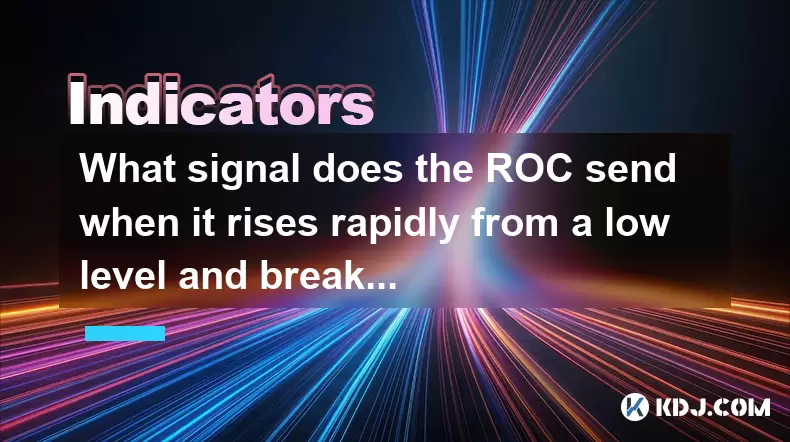
What signal does the ROC send when it rises rapidly from a low level and breaks through the zero axis?
Jul 27,2025 at 10:15am
Understanding the Rate of Change (ROC) IndicatorThe Rate of Change (ROC) is a momentum-based oscillator used in technical analysis to measure the perc...
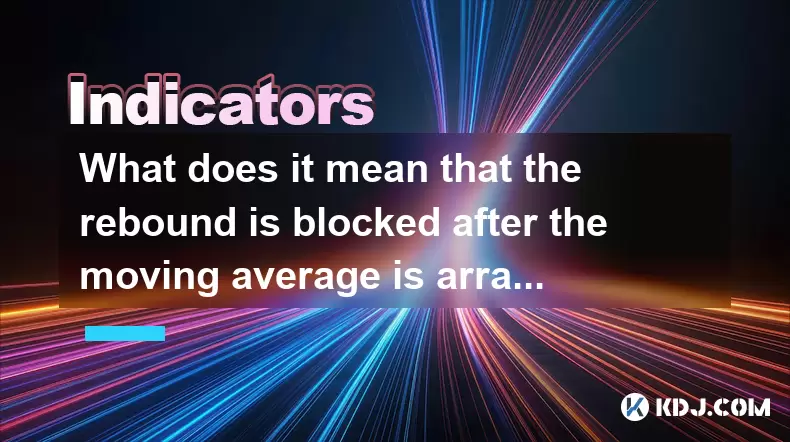
What does it mean that the rebound is blocked after the moving average is arranged in a short position for the first time?
Jul 26,2025 at 10:51am
Understanding the Short-Term Moving Average ConfigurationWhen traders refer to a 'short position arrangement' in moving averages, they are describing ...
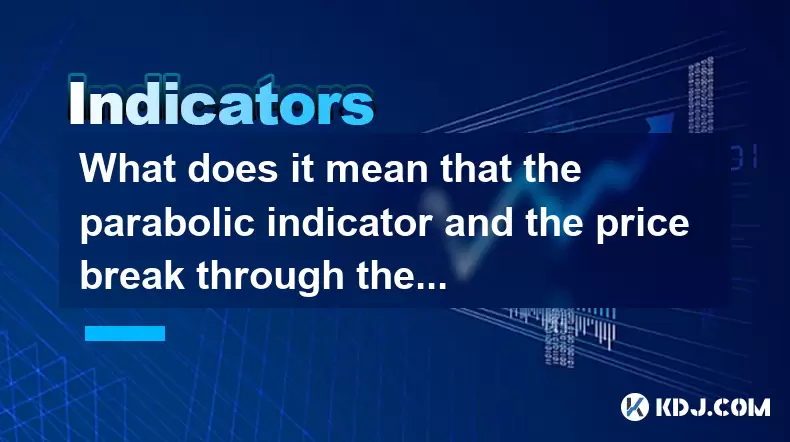
What does it mean that the parabolic indicator and the price break through the previous high at the same time?
Jul 26,2025 at 07:22pm
Understanding the Parabolic Indicator (SAR)The Parabolic SAR (Stop and Reverse) is a technical analysis tool developed by J. Welles Wilder to identify...
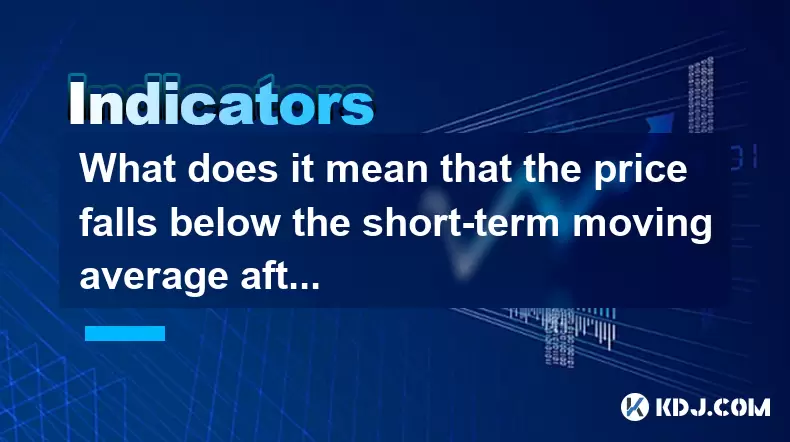
What does it mean that the price falls below the short-term moving average after the RSI top divergence?
Jul 26,2025 at 11:01pm
Understanding RSI Top Divergence in Cryptocurrency TradingThe Relative Strength Index (RSI) is a momentum oscillator widely used in cryptocurrency tra...
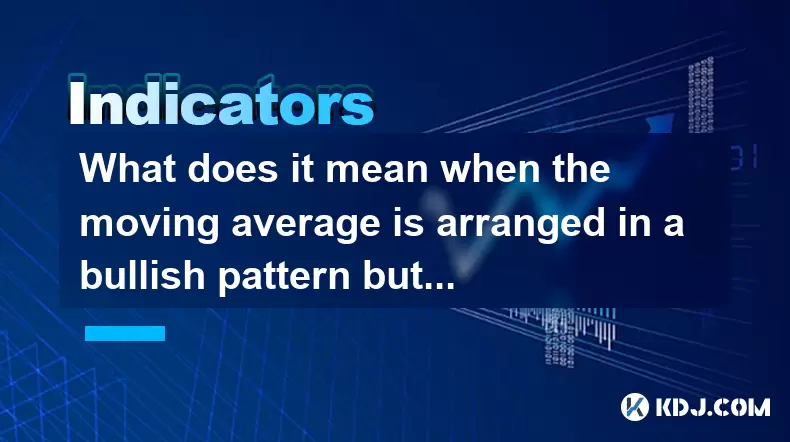
What does it mean when the moving average is arranged in a bullish pattern but the MACD bar is shortened?
Jul 27,2025 at 06:07am
Understanding the Bullish Moving Average PatternWhen traders observe a bullish moving average pattern, they typically refer to a configuration where s...
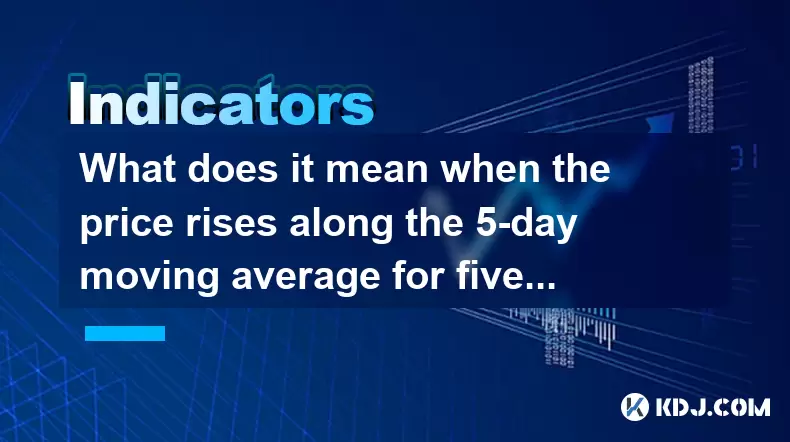
What does it mean when the price rises along the 5-day moving average for five consecutive days?
Jul 26,2025 at 08:07am
Understanding the 5-Day Moving Average in Cryptocurrency TradingThe 5-day moving average (5DMA) is a widely used technical indicator in cryptocurrency...

What signal does the ROC send when it rises rapidly from a low level and breaks through the zero axis?
Jul 27,2025 at 10:15am
Understanding the Rate of Change (ROC) IndicatorThe Rate of Change (ROC) is a momentum-based oscillator used in technical analysis to measure the perc...

What does it mean that the rebound is blocked after the moving average is arranged in a short position for the first time?
Jul 26,2025 at 10:51am
Understanding the Short-Term Moving Average ConfigurationWhen traders refer to a 'short position arrangement' in moving averages, they are describing ...

What does it mean that the parabolic indicator and the price break through the previous high at the same time?
Jul 26,2025 at 07:22pm
Understanding the Parabolic Indicator (SAR)The Parabolic SAR (Stop and Reverse) is a technical analysis tool developed by J. Welles Wilder to identify...

What does it mean that the price falls below the short-term moving average after the RSI top divergence?
Jul 26,2025 at 11:01pm
Understanding RSI Top Divergence in Cryptocurrency TradingThe Relative Strength Index (RSI) is a momentum oscillator widely used in cryptocurrency tra...

What does it mean when the moving average is arranged in a bullish pattern but the MACD bar is shortened?
Jul 27,2025 at 06:07am
Understanding the Bullish Moving Average PatternWhen traders observe a bullish moving average pattern, they typically refer to a configuration where s...

What does it mean when the price rises along the 5-day moving average for five consecutive days?
Jul 26,2025 at 08:07am
Understanding the 5-Day Moving Average in Cryptocurrency TradingThe 5-day moving average (5DMA) is a widely used technical indicator in cryptocurrency...
See all articles

























































































